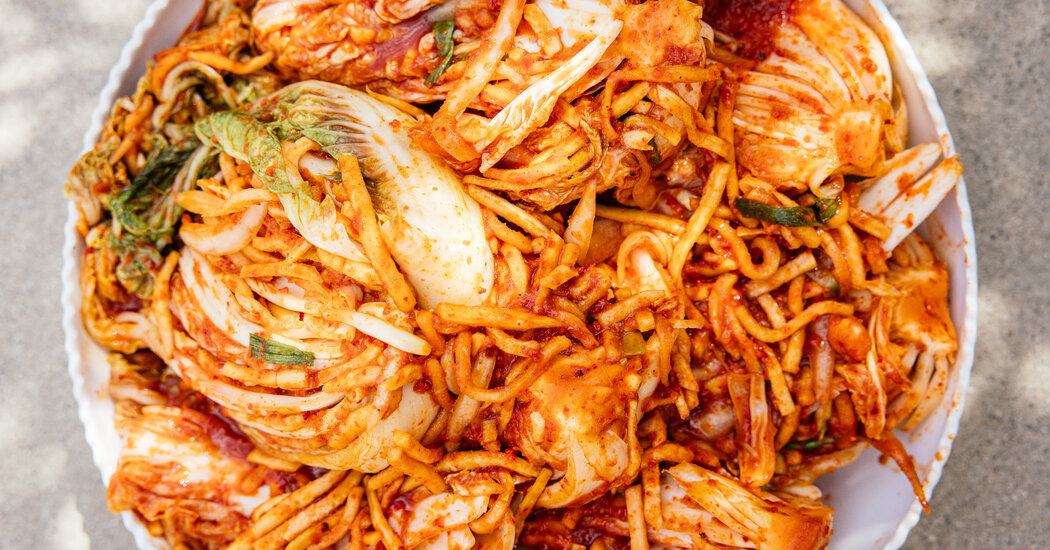
This notion of living heritage, in the form of kimjang, connects Koreans across the diaspora who share in this knowledge and experience. Kimjang symbolizes the tough Korean spirit: In order to survive harsh times, you must make yourself more resilient. Kimchi was a way to preserve the fall crop so that there would be enough food to last through the winter.
Some traditions may not be as necessary anymore, such as burying your kimchi in the ground to keep it cool in the summer and prevent freezing in the winter (there are refrigerators for that now). But the ritual of kimjang lives on in other ways.
Minam Morris, who runs the S & S Outlet and Asian Market in Solway, Minn., turns a 50-pound box of napa cabbage into kimchi all by herself each week. Her solo kimjangs take her only about a day, a lightning speed that comes from years of experience.
Ms. Morris, 73, immigrated to the United States in 1975 from the Jeolla province of South Korea, in the Southern part of the country where salted seafood, called jeotgal, is found aplenty. That influence is clear in the kimchi she makes, which has anchovy sauce, though she leaves it out of the batches that go to her Minnesotan customers.
Susan Kim, a Brooklyn-based chef whose family is also from the Jeolla province, calls her small-scale kimjangs “New York-style,” just big enough to fit her city kitchen. Sometimes, Ms. Kim, 42, will lean into the briny, seaside tastes of her mother’s kimchi, which often includes fresh oysters. “It’s just a fond memory,” she said of shucking oysters during one mother-daughter kimjang session years ago.
To describe the inimitable flavor that oysters add to kimchi, she uses the word kkekkeutan mat (“clean taste”) — like slurping a raw, sea-cold bivalve at happy hour.



